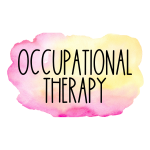How to Run Effective Counseling Groups in Schools (Without Losing Your Mind)

Feeling Overwhelmed Trying to Juggle Group Counseling and Everything Else?
Running counseling groups in schools can be one of the most impactful parts of our job as school counselors and psychologists—but also one of the most challenging. Between referrals, scheduling, behavior management, parent communication, and keeping everything trauma-informed and developmentally appropriate, it’s no wonder so many professionals ask: “Is there an easier way to do this without burning out?”
I remember those early years vividly—feeling the pressure to deliver perfect group lessons, managing kids with wildly different needs, and scrambling for materials minutes before a session. There were moments I wondered if I was helping or just barely surviving. Over the years, I’ve refined what works (and what doesn’t) through trial, error, and lots of reflection.
In this post, I’ll share practical, real-world tips to help you run effective school counseling groups with confidence, compassion, and—most importantly—clarity.
Why Counseling Groups Matter in School Settings
Counseling groups offer students a safe space to build social-emotional skills, share personal experiences, and connect with peers who “get it.” From friendship and anxiety groups to grief, emotion regulation, or behavior-focused support, small groups often reach students who might not otherwise receive ongoing intervention.
They’re also cost-effective and time-efficient—allowing you to support multiple students at once while creating a meaningful impact.
But for that impact to be sustainable, your approach needs to be structured, clear, and manageable. So let’s dig into what actually works.
Mistake I Made Early On (That You Can Avoid)
In my early years as a school counselor, I tried to run a six-week friendship group with no written plan, limited resources, and overly high expectations. I had a mixed-age group, clashing personalities, and zero boundaries around group norms. Every week felt like starting from scratch.
The turning point came when one student, who had been making subtle progress, suddenly shut down and refused to return. When I gently explored why, it turned out the group felt “messy” and “no one listened.” That hit hard—but it also gave me a clear message: Structure and emotional safety matter just as much as the content.
Start With Clear Goals and Referral Criteria
Before launching a group, ask yourself:
- What is the goal of this group?
- Who is this group for and who might not be a fit?
- How will progress be measured?
Having clear entry and exit criteria will save you time and ensure students are grouped in a way that meets their needs. Grouping students with similar skill levels or goals—rather than just based on teacher referrals—can make all the difference in group dynamics.
Create a simple referral form that asks about behavior patterns, SEL concerns, and what teachers or parents are hoping students will gain.
Choose a Theme (and Keep It Narrow)
Less Is More
Instead of a vague “social skills” group, try a more focused theme such as:
- Mindfully Me – Mindfulness Group
- Le’ts Pause – Impulse Control and Anger Management Group
- Beating My Worries – Anxiety Group
- Healing Hearts – Grief and Loss Group
- Social Savvy / Social Smarts / Friendship Builders – Friendship and Social Skills Groups
Narrowing your focus helps you plan sessions with purpose and makes outcomes more measurable. It also ensures you’re not trying to squeeze too many ideas into a short timeframe.
Plan Your Sessions Like a Pro
A simple, repeatable structure for each session might look like:
- Engagement (Hook/Opener)
- Instruction (Teach/Model)
- Application (Whole Group Practice)
- Collaboration (Partner or Small Group Practice)
- Reflection & Closure
Keep materials consistent (same visual prompts, check-in routine, or reward system) to build predictability and reduce anxiety.
Tip: I like to prepare all group materials at the start of the week, storing each group’s supplies in its own folder or tray. This has saved me from so many last-minute scrambles.
Use Visuals, Games, and Movement to Keep Kids Engaged
Many students in counseling groups benefit from hands-on learning—especially those with ADHD, sensory needs, or trauma backgrounds. Incorporate movement and play into your sessions with:
- Board games that explore SEL topics
- Emotion sorting or card decks
- Calm-down jars and stress balls
- Visual choice boards for group rules
- Mini roleplays or scenarios
One of my most successful groups used a “toolkit” metaphor. Each week, we added a new strategy to a literal toolbox: deep breathing, positive self-talk, grounding techniques, etc. The kids LOVED taking ownership of it.
Set Group Norms and Practice Them
Emotional Safety Is Everything
On day one, co-create group agreements. Keep them simple:
- Speak kindly
- Listen with respect
- What’s shared in group stays in group
Revisit these norms often. One year, I had a group that constantly interrupted one another—until we started each session with a gentle reminder of our agreements and used a talking object to guide turn-taking. It was a game-changer.
Handle Big Behaviors with Compassion and Boundaries
Some students bring intense emotions into group time—especially if you’re addressing topics like trauma, family changes, or anger. Be prepared for:
- Tearful outbursts
- Shutdowns
- Attention-seeking behaviors
- Aggression or defiance
Stay calm, acknowledge feelings, and offer a reset option (“Would you like to take a short break?”). Remember, the behavior is communication. You can maintain safety while also holding space.
In one anger management group, a student often left the room mid-session. I eventually included a quiet “feelings zone” corner where they could regroup without needing to leave altogether. It allowed them to remain included while still managing dysregulation.
Track Progress and Close With Intention
Measuring progress can be simple—think:
- Student self-rating scales
- Behavior observations
- Goal reflection sheets
- Exit interviews or student-led celebration
A meaningful closing session can be just as important as your opener. Use it to reflect, celebrate growth, and transition out of group.
Collaborate and Communicate With Stakeholders
Keep classroom teachers in the loop—without breaching confidentiality. A simple weekly note like, “This week, the group practiced asking for help in kind ways” allows for reinforcement in the classroom.
Where appropriate, update parents with progress or simple strategies to use at home.
Final Thoughts – You Don’t Have to Do It All Alone
Running counseling groups in schools can be incredibly rewarding—but also exhausting without the right tools and mindset. The secret is not perfection. It’s preparation, reflection, and realistic expectations.
Some groups will click instantly. Others will challenge every nerve you have. And that’s okay. You’re still making a difference.
Ready to Streamline Your Group Counseling Planning?
If you’re looking for ready-to-use counseling group resources, planning tools, session guides, and printables, the All Therapy Resources Membership is here to support you. With a growing library of evidence-informed, trauma-sensitive content created by school-based professionals, you’ll save time and stress—so you can focus on what matters most: helping your students grow.
Check out the All Therapy Resources Membership today and get instant access to our full Group Counseling Toolkit.













